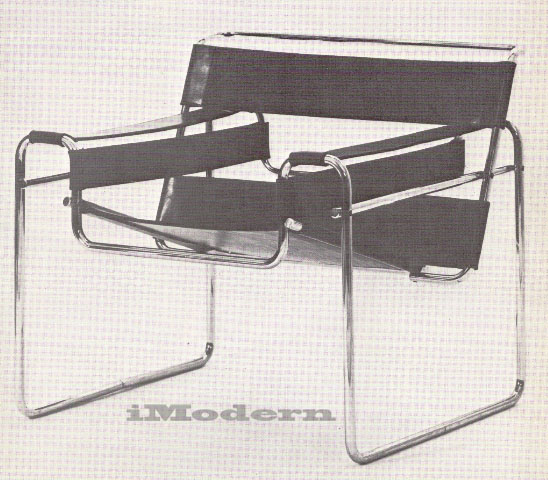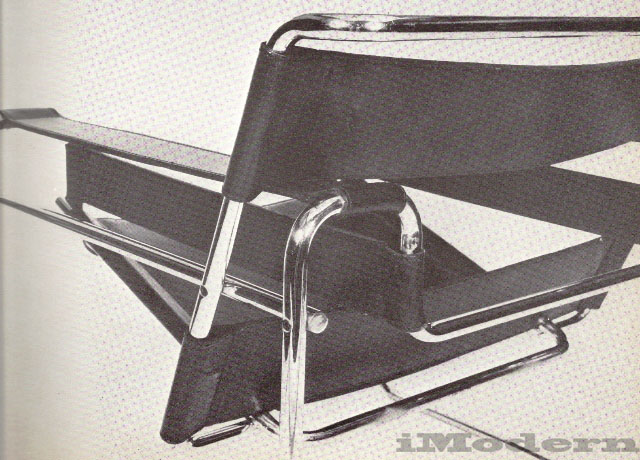Wassily chair by Marcel Breuer
Germany, 1925

Named after the painter Wassily Kandinsky, for whose home at the Bauhaus it was made, the Wassily
has a most complex arrangement of parts, with thin strip-like planes intersecting and by-passing each other at
various levels, supported by a broad tubular steel frame which describes in a fine shiny line the shape of a
well-proportioned, stable armchair.
This creates an effect of strength which is in fact borne out by the structure itself. The chair is
visually very satisfying, and its rather intricate design works beautifully. The casual way in which the steel
elements overlap and are bolted together at their connecting points is unique, and, together with the complexity of
the structure, is probably a product of Breuer's pioneering attempts to use tubular metal to its full
potential.
He was primarily interested in finding out the possibilities offered by the use of such a visually
fine material, and did not only use it for its strength. The legend runs that he was inspired to use tubular metal
for furniture after contemplating the handlebars of a bicycle.

Le Corbusier's swivel-backed Basculant chair is superficially similar, but makes an illuminating
comparison with the Wassily, which is so much less straightforward in construction. One can indeed say, in
paraphrase of it's designer's famous dictum, that the Basculant is a machine for sitting in. The Wassily, however,
could never be so described. It is a welcoming and a beautiful chair, both aesthetically and physically
satisfying.
Detail of the Wassily chair, showing the frame's structure. The parts of the frame are screwed to
one another, the main pieces being joined half way along the floor bars. The leather is seamed in loops over the
supporting elements, and the whole chair has a degree of flexibility, that increases slightly as the leather
loosens with wear.
Wegner modern chair
| 